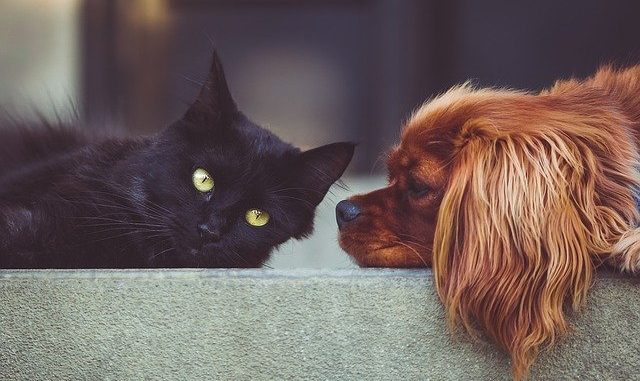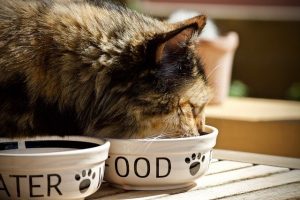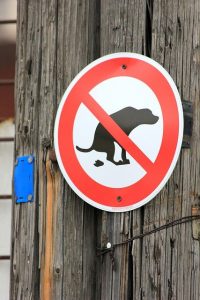
Just like us humans pets can have a negative impact on the environment, so how can you make your pet more eco-friendly?
Here in the UK we’re a nation of pet lovers. In fact 51% of UK adults own a pet, and the most popular are, overwhelmingly, cats and dogs.
In 2020 there were an estimated population of 10.9 million pet cats and 10.1 million pet dogs… That’s right 21 million dogs and cats in the UK alone!
The authors of a new book: Time to Eat the Dog, attempted to estimate the environmental impact of a range of popular pets. Their most eye catching conclusion is that dogs are more damaging to the planet than SUVs!
The authors claimed that keeping a medium-sized dog has the same negative environmental impact as driving a 4.6 litre Land Cruiser 10,000km a year. Cats weren’t much better, having the same carbon footprint as a small Volkswagen!
While cats have a smaller carbon pawprint, their impact in native wildlife populations is a real issue. Professor Stephen Harris, based at the University of Bristol, calculated that the UK’s cats kill around 188 million wild animals a year.

Between their meat heavy diets, the poop they generate, plus all the treats, toys, bedding etc we lavish on them, pets are big polluters.
So how can we get the pleasure and companionship from our pets without them weighing too heavily on our environmental consciences?
Luckily, we pet owners can make small changes in the way we care for our animal friends to make our pets more eco-friendly. Just changing the products we use and small changes to choices we make can have a huge impact on wildlife and the environment as a whole.

1. Choose FOOD Wisely
Dogs and cats are primarily carnivorous meaning the vast majority of their calories come from meat. You may be surprised to know that pets are estimated to be consuming up to 20% of all meat globally!
Dogs can have their meat diet subsidised with some vegetables and seeds, but cats are obligate carnivores, which means they must eat meat because they are unable to make taurine, an essential amino acid, without it.
Meat farming is a very carbon intensive industry, but since our pets need the nutrients in animal products in order to have a healthy diet, finding a way to minimize their impact on the environment can be a challenge.
Making small changes in your pet’s diet can go a long way to reducing their carbon pawprint.
Here are some ideas for how to make the food for your pet more eco-friendly:
- Avoid wet or dry food which contains beef. In the meat industry, beef production has the largest carbon footprint. Lamb is a close second, so is best avoided too. An easy environmentally friendly switch to make is to choose food with chicken, turkey, rabbit or sustainably-harvested fish as it’s main protein source. These all have a smaller carbon footprint. Apply the same rule to treats. Look for those with grain, cereal or fish instead of those with beef.
- Avoid high end pet foods. These foods often contain human-grade meats, which puts unnecessary added pressure on the meat production industry. Choose pet food made from biproducts of the meat industry such as organ meat and bone meal. Dog food with a high plant-based content is also a good idea.
- Consider insect-based pet food. At the moment this is an expensive option, but with more and more research going into this side of the industry it is something to keep a close eye on. These foods contain ground up crickets and worms instead of meat or fish, and animals certainly seem to like them. Insect protein is good for our pets nutritionally, and because farming insects produces very few carbon emissions, it’s good for the environment too. As a sustainable food source that can be reared on organic waste it is a great way to make you pet more eco-friendly.
- Buy food in recyclable packaging. Although convenient, pouches are almost never recyclable because they are made from a thin layer of aluminium sandwiched between layers of plastic.

2. Be Careful With POO
This is a big issue with cats and dogs.
A staggering amount of dog waste is created each year. The average dog produces about half a tonne of poop in ten years!
Cleaning up after your pet is important, not just because of the mess it causes, but because it can be a health risk.
Dog and cat faeces can cause toxocariasis, an infection caused by roundworm parasites. Humans can catch it from handling soil or sand contaminated with infected animal faeces.
Young children are particularly at risk as they are more likely to come into contact with contaminated soil when they are playing.
If you are a dog owner, you probably need to pick up after your dog three times a day. If you are using a black plastic disposable bag, over a year, that’s more than a thousand plastic bags going to landfill.
Here are some ideas for how to clean up after your pet in a more eco-friendly way:
Dogs
- Use recycled biodegradable bags. There are many different brands available on the market which are biodegradable or compostable. Look for bags that are naturally scented. They are a little more expensive than the budget brands, but as many are made of vegetable starch, they will definitely reduce your plastic use.
- Bury it: If you live in the countryside with plenty of open green space, you can dig a hole to bury it in, making sure you cover it up properly. ‘Stick and flick’ is also an option, but only on land that is not used for lifestock.
Cats
- Buy eco-friendly cat litter: Avoid cat litter which contains sodium bentonite clay. This is sourced using an environmentally destructive strip-mining method. Choose one of the eco brands available usually made from wood, corn, wheat or newspaper. Check that pet litters made from wood-based materials are sourced in an environmentally friendly way by looking for the FSC (Forest Stewardship Council) ‘tick-tree’ logo.
- Never flush! Even though some litters say you can flush them, don’t! Sewage treatment systems are not equipped to treat the parasites found in cat waste. Dispose of your cat litter in the general waste in biodegradable bags.

3. Choose Green Grooming Products
Pet shampoos, conditioners, sprays and repellents may contain chemicals which can damage the environment.
Some dog flea treatments contain permethrin, an insecticide which is highly toxic to aquatic life. It can also kill bees and other important pollinators – so watch out where you’re spraying and dispose of empty packaging properly.
The RSPCA advises only treating your pet for fleas with products recommended for them. Permethrin is very poisonous to cats, so don’t be tempted to double up if you are a multi-pet household.
Here are some ideas for how to groom your pet in a more eco-friendly way:
- Grooming your pets regularly and washing their bedding with good old soap and water is the best way to keep ticks and fleas at a manageable level.
- Choose less toxic flea and tick treatments. Chemical treatments will be necessary if your pet enjoys an outdoor lifestyle, particularly during the warmer months. Products containing the active ingredients s-methoprene or pyriproxyfen are the best to eco-friendly options to choose. Avoid products that include synthetic neonicotinoids (imidacloprid and dinotefuran). These are toxic to bees and other pollinating insects.
- Choose eco-friendly shampoos. Look for products that are biodegradable, free of parabens and synthetic fragrances.

4. Ditch Plastic Toys and Accessories
Huge numbers of pet products made from plastics end up in the landfill each year.
We all know the harmful impact of plastic on the planet, so although we want our pets to feel cared-for, comfortable and mentally stimulated, limiting the number of plastic pet toys or accessories we buy is a bit of a no brainer.
Lots of manufacturers are creating stylish and eco-friendly pet products, including beds and plush toys, made from environmentally-responsible materials, including recycled plastic.
Here are some ideas for how to green up your toys and accessories:
- Feeding bowls. Opt for stainless steel, which is long lasting and durable. Alternatively choose products made from sustainable materials such as bamboo fibre, untreated wood or recycled plastic.
- Choose ‘green’ chew toys. Look for products made from natural and sustainable materials. Rope, hemp and natural rubber are all sustainable and tough, reducing the odds your pup will destroy them. Don’t forget to donate all your lightly used pet toys to an animal shelter – they’ll likely be glad of the support.
- Get creative. Instead of buying new check out your own junk or visit charity shops. A knotted old t-shirt can be a great pull toy for your dog. Old stuffed animal toys will get a warm welcome from your pet when the children have got bored with them. Remember to remove any hard plastic buttons or eyes and avoid toys stuffed with polystyrene beads.
 5. Wildlife Protection
5. Wildlife Protection
Loveable though they are, cats have a huge impact on the populations of small mammals and birds.
Limit your cat’s impact on biodiversity of wildlife by:
- buying and fitting a collar bell
- keeping your cat indoors at dusk and dawn, which is their natural hunting time.
 5. Wildlife Protection
5. Wildlife Protection
Leave a Reply